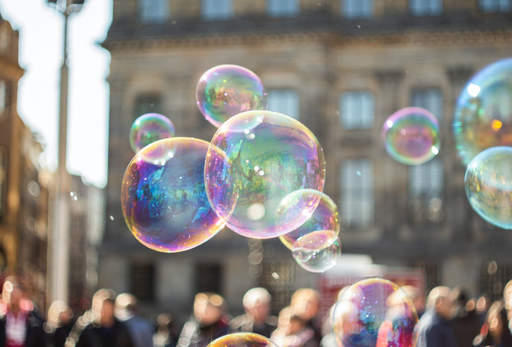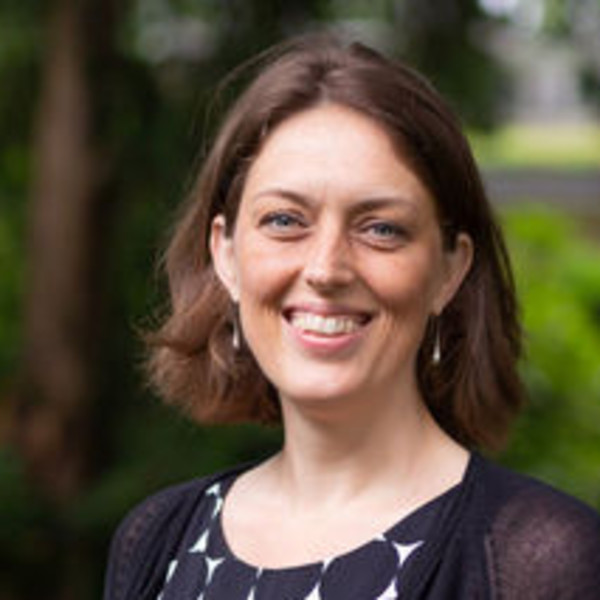
Cette page n'est pas disponible en français
Choisissez langues
Anglais,
Néerlandais
I hadn't really considered that before," says the older man, visibly touched. He is responding to the story he has just heard from a young man. They have just been talking as a pair as part of a dialogue with eight other strangers from different parts of the Netherlands. It is March 2021 and the topic is: 'How have you experienced the covid-19 pandemic so far? And: what do you think will need to be restored once the crisis is over, and what should we keep from this whole situation?'
We had invited all participants to share a 'loss' and/or a 'seedling' story: about something that they had lost during the pandemic and/or something that had grown or blossomed - perhaps to their own surprise. As a pensioner, the elderly man had certainly experienced difficulties, but he also found the lockdowns a period of rest, during which he could enjoy his house, garden and long walks during which he (re)discovered the beauty of nature in the Netherlands. He shared that positive story. The student, on the other hand, told of how he had felt personally locked in: whereas before he had easily gone out and visited many places and people, now he had found himself confined to his own room and place of residence. And this was depressing, boring and nerve-wrecking to him. He also found himself worrying about the future more.
The young man's story really struck home with his conversational partner and got him thinking. 'I think it's very interesting to hear some young people tonight. In the conversation with my duo partner, I candidly said: 'I am glad that I can still drive around in my little car. I can go wherever I want’. But when he told me he didn't have a car and felt locked up because of that, I realized, 'OK, I hadn't really thought of that yet'. Because of the covid restrictions, my world has become small; I came to live in my own little bubble. And now I notice how good it is to hear others... We don't do that enough. I thought it was very nice that this meeting has now been arranged.' And that statement touched the student, in turn: 'I would like to respond to that: I find it very nice to hear this from a rather old gentleman. It sometimes seems as if people don't care. That they don't even see what it is like for the younger generation. That we struggle with loneliness and stress, but also that we barely have a chance of finding a house, for example. And that we worry about the climate. I find it encouraging that there are elderly people who want to think about that and listen.'
Stories as a bridge
What happened here is a good illustration of the connecting power of stories across worlds. Both interviewees were already aware, through social media and newspapers for example, that the lockdown and covid restrictions were especially hard on young people, and that middle-aged people also experienced advantages - next to the disadvantages. That in itself was not new. But not talking about 'mental wellbeing' in general, but hearing the personal story of one other individual, brought it a lot closer to home. The sharing had a bonding effect and immediately triggered something activating: 'what can we do?' The solution was not readily at hand, but the fact that it was considered already had its effect.
Especially in those instances where we need people from different walks of life to tackle an issue together, establishing that generative connection between them is a crucial first step. The further apart their different worlds are, the more important it is to carefully craft that conversation - such an exchange of personal stories across bubbles usually does not just happen by itself.
Distance between 'bubbles' and the importance of weak ties
The covid crisis and the ensuing 'social distancing' has enhanced the development of 'bubbles' in organisations and in society as a whole, and increased distances between groups. In a lecture for the Dutch KHMW, Professor of Social Geography Beate Volker explains how this works.
The beginning of the crisis seemed to herald a kind of unanimity, she says, culminating in very vocal support for the heroic healthcare workers, for example. But as it went on, society became more distant. ‘It is easy to explain', says Volker. ‘Normally, we spend 80% of our time with people with whom we have a 'weak tie': the neighbours you greet as you walk past, the market vendor where you buy your fruit and veg, fellow train passengers next to whom you sit in silence but who are a familiar face.... As human beings, we enjoy it too: the unexpectedness of those encounters energizes us. They make us feel seen and confirm our identity: we are part of a greater whole. Like squirrels collecting nuts, we glean lots of little bits of information from these different fleeting moments. All of those meetings and weak ties fell away with covid. The close ties, our immediate family, good friends, those were all that remained. That contact intensified.’
This phenomenon affects individuals more than you might think: people really miss the energy they derive from spontaneous encounters, and their information becomes more one-sided. It also impacts the society as a whole. Volker illustrates this with two simple drawings. In the first, different dots (people) are connected by a jumble of lines: thick ones and thin ones – representing close and weak ties. In the second picture, all the thin lines fall away. What remains are small, highly connected clusters of people that are completely separate from each other: what we came to call the 'bubbles'. When a society loses its weak ties, this has all kinds of consequences, she explains: polarisation increases, differences between groups increases, loneliness is reinforced, there is a lack of social cohesion, it grows a breeding ground for conspiracy thinking... We always see this phenonemon in times of crisis, Volker explains, and we see it now. She is also optimistic about the ability of society and organisations to recover. That does require, however, that we re-establish those weak ties. This will partly happen automatically when society will re-open. But sometimes a ‘boost’ is needed as well.
Conversations as a catalyst
Arranging dialogues across groups or 'bubbles' which provide room to exchange stories and experiences about the previous period can provide such a ‘boost’: What have you experienced and what makes that important to you? This is not only helpful to restore weak ties in society as a whole, but can also be applied in the context of work or education. Because there as well, weak ties were eroded and people have experienced the crisis totally differently, depending on their circumstances.
During the past months, we have regularly organised dialogues like this within or between teams, where distance had grown after more than one and a half years of remote working. A storytelling session about what everyone has been through and how people experienced this period serves to reduce this distance and helps restore (weaker) connections. We invited people to exchange stories, with questions such as:
- Would you like to share a seedling story and a story of loss? What was lost that needs repair in the future? And what has grown or blossomed - perhaps to your surprise - that you are happy with and would like to hold on to?
- If you draw the period of the pandemic as a graph with ups and downs... what does it look like for you? When were your highs and lows, which moments were difficult and how did things get better again?
- Would you like to share a moment when you felt completely overwhelmed or deflated? What or who helped you through? And do you have an example of a sparkling moment? A situation that energized and (re)vitalized you? What happened there?
We usually start the dialogue in pairs, in a breakout room. Because that is the best way to give space to people’s stories and build connections. Next, it is possible to scale up and make groups bigger and reflect on the discoveries and experiences together... What do these stories teach you about your and other’s resilience? Or about how you support each other? Some teams want to reflect on what they want to hold on to, or do differently, in their cooperation or remote working practices. In such cases, the discussion is a springboard for new approaches. Very often, however, the exchange is sufficient in itself. And it helps to reflect on what it was like to talk to each other in this way.
Other examples we have heard of such meetings aimed at strengthening 'weak ties' are:
- A project group on ‘work happiness’ at Utrecht University of Applied Sciences decided to give a boost to the 'coffee room' conversations that had been lost due to remote working, by offering employees the opportunity to sign up for a 'coffee with...'. They could pick up a coffee-to-go at a number of shops in the city for a chat with an unknown or even well-known colleague. A map with walking routes was supplied to stimulate a walk.
- A number of newspapers organised a series of conversations at the end of 2020 (see for instance ‘The Netherlands in conversation’ by de Volkskrant) for which readers could sign up. The newspaper paired people up in pairs and they went out to meet each other.
- Since 2001, 'The Muse' foundation has been organizing 'conversation meals', after a concept by Oxford scholar Theodore Zeldin. Strangers are given a menu with no dishes on it, but rather questions that invite an open exchange of experiences, values and ideas. They remain in pairs the whole time and shape their own in-depth conversation. In 2013, Viennese resident Eugene Quinn translated this into the city’s famous coffee houses: in the Coffeehouse Conversations, a Vienna resident is paired with an expat or visitor each time.
Space for stories
The most important success factor for these types of encounters is that there is room for stories. Sharing stories about one's own experiences have an inherently bonding effect between people. Whereas opinions and facts challenge people to check and consider if they see things: 'is' it really the case?’, which may open the door to debate, a story invites someone to examine their own life for similar experiences (as everyone who has ever had their leg broken can attest: when they share their experience, they are bound to hear loads of other broken-leg-experiences…). Especially if they are exchanged in pairs. That is why ‘the shortest distance between two people is a story’ is a favorite phrase amongst storytellers.
Of course, such a meeting with a few others does not immediately restore all weak ties, but it is an experience that can encourage people to start more conversations in their team that ‘dig a little deeper’. And -in the case of a dialogue with people they haven’t met before - it may make people more open to listening to stories from strangers, or to look differently at people who are 'different' from themselves, even if it is just by asking themselves: what story could there be behind this person's behaviour? The once-in-a-lifetime experience of a real connection with a stranger can have an effect that goes beyond the one conversation. Especially if organized within groups that do 'belong together' but where distance has grown (neighbourhoods in a city, departments of an organisation, colleagues on a team....), exchanging stories also helps to (re)build the connections needed to work together across their different worlds.
This blog was written as part of a (Dutch) book project on the role of story and dialogue in development of teams and organisations, by Saskia Tjepkema, Joeri Kabalt, Martijn van Ooijen, Luc Verheijen, Koen Weber and Lieve Scheepers.
